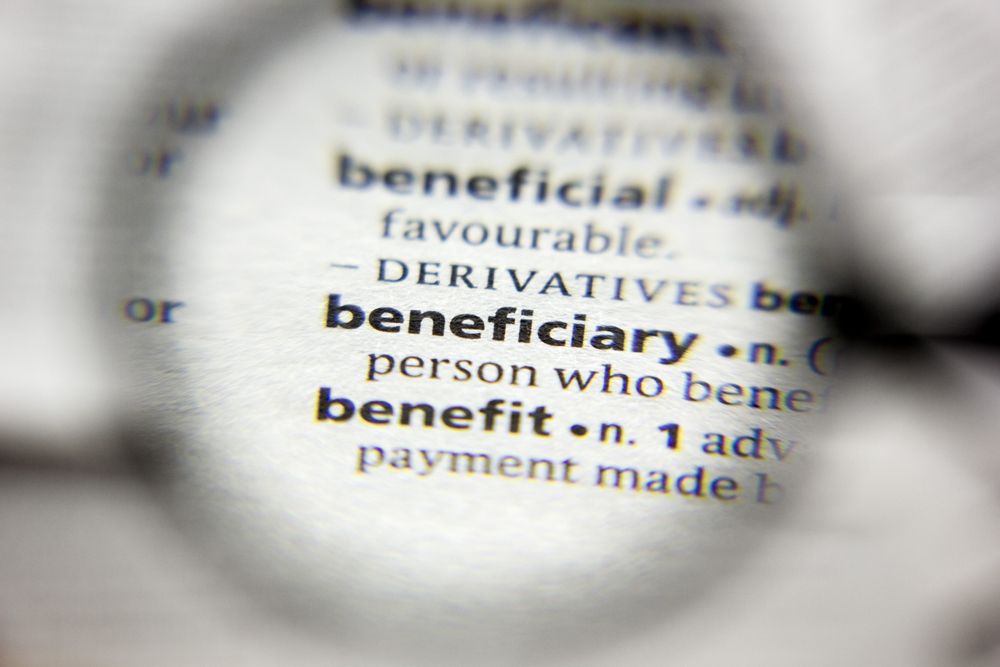–
What is a beneficiary for a life insurance policy?
A beneficiary is a person or organization designated to receive a death benefit payout from the insurer once the insured passes away.
Often, beneficiaries are loved ones listed by the insured on their life insurance policy before they pass away. However, beneficiaries can be trusted non-relatives, friends, business partners, and even charitable organizations.
How do beneficiaries get a death benefit?
If you’ve been listed as a beneficiary on a life insurance policy, you will likely get a death benefit payout from your loved one’s life insurance policy. In life insurance policies, death benefits vary in amount, and depend on the type of life insurance policy.
Some life insurance policies only pay a death benefit under certain conditions. However, before any death benefit is paid out, the beneficiary will have to file a claim on the life insurance policy.
–
Being a beneficiary is a big deal, but it doesn’t have to feel like one. As a beneficiary, always make sure you’re aware of any changes to the life insurance policy and remember that the life insurance customer service department is there to help where needed.
–
How do beneficiaries file a life insurance claim?
–
To claim the death benefit, life insurance beneficiaries must submit a claim to the appropriate insurance company. Since insurance companies won’t generally reach out to you, it’s important you contact the appropriate insurance company and file your claim as soon as possible.
Once you know the name of the insurance company and have contacted them, you will be asked to submit certain documents to start the claim filing process.
The best way to determine what documents are needed is to contact the customer service department for the insurance company the policy was purchased. Generally speaking, life insurance companies require those filing a claim to provide the following:
–
-
Death certificate:
The insurance company will need a certified copy of the insured’s death certificate. This proof of death ensures the policy is being claimed legitimately and helps prevent fraud. To receive a certified copy of the death certificate, you’ll need to contact the funeral home or the medical professional who confirmed the time and place of death.
However, you can also request a copy from the local vital records office. Keep in mind it can take a bit of time to receive a copy, so stay on top of this.
–
-
Claim form:
Also known as a “request for benefits,” this form asks for information such as cause of death, insured’s name, and policy number. You may also need to indicate your relationship to the policyholder and how you would like to receive the death benefit.
–
-
Policy document:
Everything from pertinent policy information to relevant information on the insured will be in this document. If you’re having trouble locating the policy, you can try contacting the insurance company directly, contacting the life insurance agent associated with the policy, or reaching out to the policyholder’s financial advisor for further insight.
Depending on the policy the deceased had, you may find the insurance company requires additional documents. Make sure to provide additional documents as necessary and at the discretion of the insurance company.
–
You gathered your documents, now what?
Once you’ve gathered the necessary documents to file a claim, it’s time you submit the documents. Be sure to make copies of the documents for your own records – this helps you quickly reference them when the insurance company reaches out. Once the claim is filed, you will have to wait for the claim to be processed.
In other words, the insurance company will review the information provided and make a determination on the claim.
Keep in mind some insurance policies do not pay out a death benefit if the insured dies under certain circumstances, so it is possible to get a request for more information or even to have a claim rejected.
–
Choose how you want to receive the death benefit.
If your claim has been approved, there are a few different ways you may be able to receive the death benefit. This can depend on the insurance company. Two options in which a death benefit can be received are lump-sum or annuities.
-
Lump-sum:
Beneficiaries who choose a lump-sum payment will receive the entire death benefit at once.
-
Annuity:
Beneficiaries who choose an annuity will receive a predetermined annual payment for a predetermined number of years in accordance with the annuitization date.
Being a beneficiary is a big deal, but it doesn’t have to feel like one. As a beneficiary, always make sure you’re aware of any changes to the life insurance policy and remember that the life insurance customer service department is there to help when needed.
For more information about life insurance, contact one of our knowledgeable agents at 713.254.3439 or email us at [email protected].


